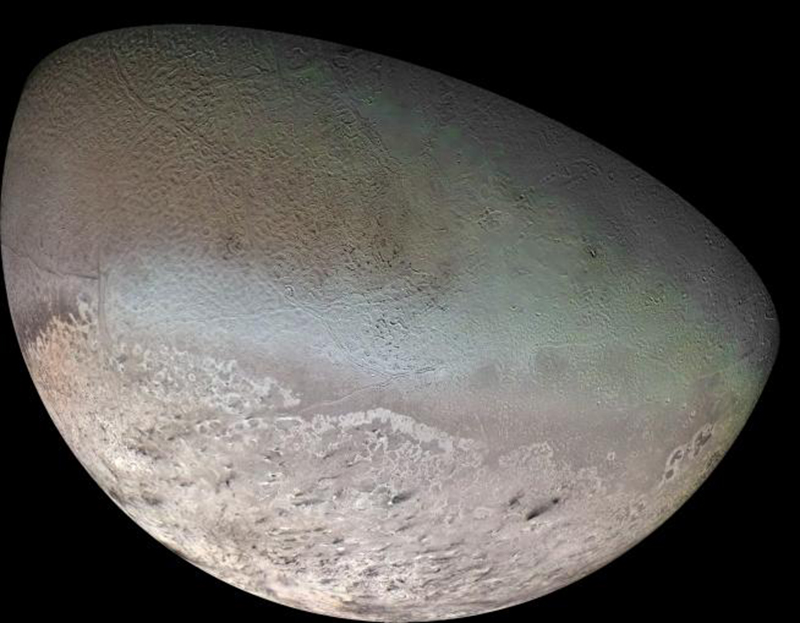Resources
Voyager's view of Triton

Photojournal: PIA00317
Neptune's largest moon Triton, is seen in this mosaic of images captured by Voyager 2 during the only visit thus far to the Neptune system.
Triton is one of only three objects in the Solar System known to have a nitrogen-dominated atmosphere (the others are Earth and Saturn's giant moon, Titan). It has the coldest surface known anywhere in the Solar System (38 K, about -391 degrees Fahrenheit)—so cold that most of Triton's nitrogen is condensed as frost, making it the only satellite in the Solar System known to have a surface made mainly of nitrogen ice.
The dark streaks overlying the pinkish ices at bottom are believed to be dust deposited from huge geyser-like plumes, some of which were found to be active during the Voyager 2 flyby. The bluish-green band visible in this image extends all the way around Triton near the equator; it may consist of relatively fresh nitrogen frost deposits. The greenish areas includes what is called the cantaloupe terrain, whose origin is unknown, and a set of "cryovolcanic" landscapes apparently produced by icy-cold liquids (now frozen) erupted from Triton's interior.
Credit
NASA/JPL/USGS


